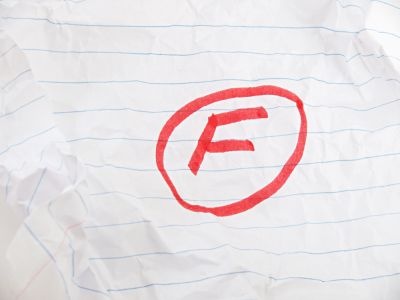Southern states get failing grades for school funding fairness

Many states are failing to provide public schools with the resources they need to serve all students equitably, and Florida and North Carolina doing a particularly poor job in addressing educational disparities caused by concentrated poverty.
That's among the findings of a new report from the Educational Law Center (ELC) and Rutgers Graduate School of Education titled "Is School Funding Fair? A National Report Card," which analyzes data through 2009. It's the second such report card from the group, with the last one issued in 2010.
"Most states continue to neglect growing student poverty by failing to direct resources to the students and schools most in need," says co-author David G. Sciarra, ELC's executive director. "In some states and regions, the shortfalls in school funding are reaching crisis levels."
The report defines "fair" school funding as a state finance system that provides a sufficient level of funding to local school districts to account for additional needs due to student poverty. In other words, a fair system would increase funding for local districts as the level of concentrated student poverty rises.
The report observes:
Student poverty -- especially concentrated student poverty -- is the most critical variable affecting funding levels. Student and school poverty correlates with, and is a proxy for, a multitude of factors that impact the costs of providing equal education opportunity -- most notably, gaps in educational achievement, school district racial composition, English-language proficiency and student mobility.
The report evaluates states on four measures:
* Funding Level -- the overall level of state and local revenue provided to school districts;
* Funding Distribution -- the distribution of funding across local districts in a state relative to student poverty;
* Effort -- differences in state spending for education relative to state fiscal capacity; and
* Coverage -- the proportion of school-age children attending the state's public schools.
The results show that many states unfairly allocate education funding, shortchanging their most disadvantaged students and the schools serving them.
When it comes to funding, Wyoming comes out on top, providing $19,520 per pupil, compared to the national average of $10,774. Tennessee comes in last, at $7,306. Other states in the bottom 10 include Mississippi, Arkansas and Texas.
"Even after adjusting for regional wage variation and population density, low-funding states predominate in the South and West regions, while the highest-funding states are in the Northeast and Midwest," the report finds.
When it comes to funding distribution, 16 states have regressive funding systems, providing high-poverty districts with less state and local revenue than low-poverty districts. Five states -- Alabama, North Carolina, Texas and Illinois -- show what the report calls "clearly regressive funding patterns."
The report finds wide variation among states on funding effort, which it calculates by looking at the percentage of the state's Gross Domestic Product allocated to education. The lowest-effort states are Tennessee, Louisiana, South Dakota and Delaware.
Coverage rates also vary widely among states. Louisiana comes in near the bottom, with its public schools enrolling only about 80 percent of the state's school-age children, and with those students coming disproportionately from lower-income households.
"Three states -- Florida, Missouri and North Carolina -- received low ratings in each of the four indicators," the report states. "These are low-effort, regressive states receiving a grade of 'D' or 'F' on both indicators, and ranking in the bottom half in terms of the overall levels of funding provided and coverage."
To improve student achievement, the report concludes, states will need to go beyond politically popular "school reforms" and develop strong systems of public educations that are sufficiently funding, with those funds distributed progressively.
Tags
Sue Sturgis
Sue is the former editorial director of Facing South and the Institute for Southern Studies.
